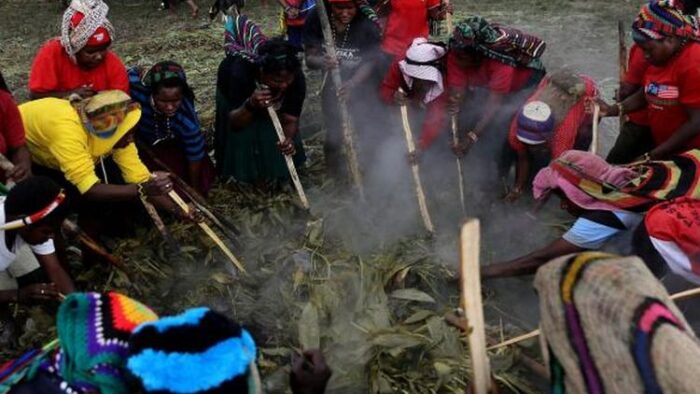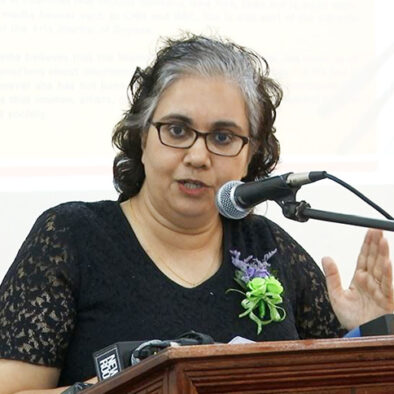Thelandofpapua.com – Papua, one of the largest islands in the eastern part of Indonesia, boasts a rich cultural tapestry woven with diverse traditional ceremonies.
These time-honored customs, handed down through generations, are deeply embedded in the Papuan way of life, reflecting their values and social fabric. Let’s delve into some of the most prominent traditional ceremonies celebrated across Papua.
Bakar Batu Ceremony
The Bakar Batu ceremony stands out as one of the most renowned traditional practices in Papua. Essentially a thanksgiving ritual to God, this ceremony marks significant events such as births, traditional marriages, the appointment of tribal chiefs, and even pre-war preparations.
The community gathers to cook and share meals using stones heated to red-hot temperatures. Historically, this feast involved roasting pork for the highland communities. However, in a display of cultural tolerance, Papuans now also roast goats, cows, or chickens.
Performed by interior tribes such as those in Nabire, the Baliem Valley, Paniai, the Central Highlands, Star Mountains, Yahukimo, and Dekai, the Bakar Batu ceremony carries various regional names: Kit Oba Isago in Wamena, Barapen in Jayawijaya, and Mogo Gapil in Paniai.
Death Ceremony of the Asmat Tribe
The Asmat tribe’s death ceremony is another deeply rooted tradition in Papua. Unlike typical burial practices, the Asmat people set the deceased adrift on a canoe with some sago. Before this, the body is laid on a bamboo mat and floated on a river that leads to the sea.
This practice stems from the belief that death results from the disturbance of evil spirits, and setting the deceased adrift is a way to return them to the spirit world.
Ero Era Tu Ura: The Ear-Piercing Ceremony
Ero Era Tu Ura is a traditional ear-piercing ceremony conducted for children aged three to five. During this ritual, children sit on mats surrounded by peers while both ears are pierced with a special tool.
This ceremony holds significant cultural importance as Papuans regard ears as vital organs that require proper care.
Kiuturu Nandauw: The First Haircut Ceremony
Kiuturu Nandauw, also known as Kakarukrorbun, is the ceremonial first haircut for children when they reach the age of five. This tradition continues to be a vital part of Papuan culture, symbolizing a child’s growth and development within the community.
Wor Ceremony
The Wor ceremony is a protective ritual passed down by the Biak tribe, which inhabits several regions in Papua. This ceremony intertwines with the religious life of the Biak people and encompasses various social aspects of their community.
For the Biak, Wor is a compulsory practice for the immediate family, involving both the husband’s and wife’s relatives. The primary purpose of Wor is to seek protection from the universe’s ruler for their children. Additionally, this ceremony is believed to safeguard individuals through different stages of life, from pregnancy and birth to old age and death.
Conclusion
Papua’s traditional ceremonies are more than mere cultural expressions; they are vital links to the island’s heritage, reflecting the community’s values, beliefs, and social bonds.
These rituals, from the communal feasts of the Bakar Batu ceremony to the spiritual send-offs of the Asmat death rites, illustrate the rich and diverse cultural landscape of Papua.
By preserving and participating in these ceremonies, Papuans continue to honor their ancestors and maintain the integrity of their cultural identity.



